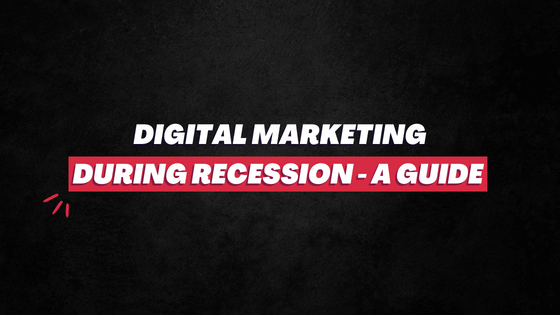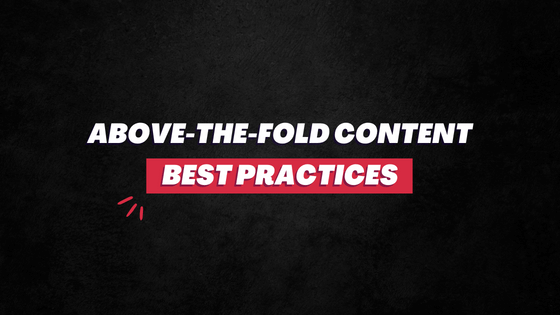As consumers, we only engage with marketing materials that are relevant, of course, but also emotionally interesting.
In the crowd of vanilla ads, the ones that stand out are the ones that connect with the audience on a deeper level.
You need to build that bond with whoever and how-ever you’re targeting so to drive maximum ROI.
So, if you wonder why your brand engagement is poor, and conversion worse, it’s likely because your content lacks the emotional factor that’s required to capture people’s attention and compel them to take an action.
Fortunately, emotionalizing your digital marketing campaigns to drive higher conversion isn’t really difficult.
Whether it’s a paid or organic campaign, irrespective of the platform you’re using – there are a few components you need in your content to hit it home with your target audience.
Here are five tips to do exactly that and bolster your conversion by as much as 10 times:
1. Tell A Captivating Story
It’s difficult for us to remember the information. But it’s much easier to remember stories. Because the latter involves emotions.
Storytelling is one of the key elements of successful digital marketing campaigns.
And as we move forward in the coming years – as competition grows across industries – the need for stories would get even more relevant for every brand.
Sadly, so many marketers remain aloof from this critical reality, still not leveraging stories to build a connection between the campaigns and the target audience.
Don’t be one of them.
To connect with your target audience and leave a lasting impact that drives conversion, you must tell a story about your brand or business.
But admittedly, storytelling is easier said than done.
Moreover, depending on what kind of digital marketing campaign you’re running, and on which platform, you might not necessarily have sufficient space and time to tell a story.
But then this is where being creative helps.
Generally put, there are three fundamentals to a good story:
- Problem/struggle
- Realization/“Eureka moment”
- Solution/better life
Your story must include the problems that you were facing and the struggles you were going through. This will help the audience empathize with you.
Next comes the “eureka moment” when you realize what needs to be done to fix the problems you’re facing. This will give the audience hope.
At last, you give the solution. You talk about the solution you implemented and how that improved your life. This will provide the audience with a course of action as to what they can do now to resolve a similar problem they are experiencing.
You can cover these three fundamentals of effective storytelling in any form. In a landing page text-based content. In a carousel of images. In 30-second videos.
Note: These three stages are just to give you a framework. Not all stories have to have them.
Again, it just requires you to be a bit creative.
Relevant story will leave a lasting impression in the conscious of people. It will trigger emotions. It will eventually convert.
2. Use Powerful Words (That Your Audience Uses)
There are some words that have an enormous impact on readers’ consciousness.
These words carry an emotional factor. They instantly stick out, sound great and make whatever you’re saying more valuable.
You need to add more of such powerful words to your vocabulary.
Now, these powerful words can be classified into two groups.
One, the generic ones. Two, industry-standard ones.
Generic powerful words are basically the ones that we can use in any normal conversation.
Extraordinary. Irresistible. Agonizing. Exquisite. Stimulating. Dazzling. Reckoning… These are some powerful words that we can use when talking to anyone about anything
CoSchedule has a cool list of some powerful words:

(Source: Slideshare)
Industry-standard powerful words are the ones that are specific to your industry, which makes your content sound more authoritative.
For instance, in my industry…
…lead generation, conversion rate optimization, above the fold, customer acquisition cost, lookalike audience, and ROAS…
…are the industry standards words that make explaining something easier, direct, and succinct.
There must be many powerful words even in your own industry that authority and influencers use often.
Now here’s the most important part:
While you must use more of such powerful words (generic and industry standards), the key is using words that your target audience uses themselves.
In fact, this is one of the most effective conversion techniques: use words that your target audience uses.
When you do this, it helps relevant people connect with you better.
It shows that you’re one of them. It makes them believe that you understand their unique needs and problems adequately.
This enables them to empathize with your story better.
So, to make your campaign more emotional and effective, you must use powerful words that the people who you’re targeting use too.
If you’re really one of them, you would know what words they use and what expressions trigger them emotionally.
If not, market research is the key.
You must spend a sufficient amount of time-consuming user-generated content on social platforms.
Twitter, Reddit, and Quora are the best places to start.
Read as many relevant tweets, answers, and comments. See what your target audience is talking about. See what kind of words are they using.
Then add those words to your vocabulary.
3. Make It Sound Like A Human
This goes without saying!
People like to interact with other humans.
If your content sounds very formal and robot-like, your audience wouldn’t want to engage with it, let alone get emotionally attached.
Sadly, so many people, in the name of being professional and authoritative, adopt a formal tone in their content. And their ROI takes a hit without them even realizing it.
Just take an example of any successful digital marketing campaign out there…
Do they sound formal or informal?
Are they engaging or not?
Do they not strive to interact with the target audience one-on-one?
Your answers likely proved my point!
Besides, it is when you talk like a human do you enjoy the room to make your content sound interesting, enjoyable, and/or passionate.
And your campaign would connect with your audience when it has these humane attributes.
Remember, people want value when consuming content.
But what if you include with your valuable content fun and emotional factors too?!
That’s when they will “love” your content. That’s where high conversion lies.
Now, how do you make your campaign engaging?
The most fundamental solution to this is simply to act like you’re making this campaign for just one human.
There’s this one person who you’re targeting – who you want to talk to, provide value, and then convert.
Keep this person in your mind when creating your campaign’s content and you’re good to go.
I have covered this topic extensively in another post.
Please check out: How to Make Your Content More Engaging? (15 Practical Ways)
4. Don’t Bark At The Wrong Tree
This isn’t necessarily a direct way to emotionalize your digital marketing campaign but it’s worth mentioning.
Imagine you have created this incredible campaign around baby products. But you’re showing this content to teenagers, let alone those who are married.
What will be your ROI?
Take a guess…
Exactly!
Of course, when they consume your content and like it, it will positively impact your brand positioning. They might purchase your products when they actually have a baby. But that’s a long-term scope. When you’re investing in paid ads, especially with the intent for immediate conversion, a long-term return isn’t the first priority.
Meaning to say, when you’re targeting an irrelevant audience, you won’t convert optimally.
In the context of this article…
If you have created a campaign specifically for Segment A, Segment B will never emotionally connect to it because you didn’t cover their unique needs and requirements here, did you?
So, do not bark at the wrong tree that is unlikely to connect with your campaign and act on it.
Start by creating a very unique buyer persona.
Who you’re targeting, where they live, what’s their budget, what are their preferences, and more.
Answer all these questions.
Then create a campaign for this persona individually.
Now, if you’re investing in paid ads, be very careful in the targeting option. Pick the right audience who you have made this campaign for.
Platforms like Facebook, Instagram, Twitter, and Google Ads offer enough options to target specific segments per your buyer persona.
If this is your organic campaign, you want to be clear in your message as to who you’re reaching out to.
- Avoid misleading headlines
- Do not optimize content with irrelevant keywords
- Start your videos or carousels by addressing the target audience directly
- Talk about things that your potential customers care about
Your campaign – no matter how exceptional – will fail to emotionally interest the consumers if you’re not reaching the right audience.
Understand that metrics like Reach, Number of Views, Likes, and Engagement mean nothing if your conversion is bad.
Talk to the right people. If your content is good, it will connect with them.
5. Avoid Being A Salesman
Recall the last few video ads you saw and liked – were they selling you anything? Did they ask you directly to purchase their products?
Or, were they simply telling a story and then pushed their brand name?
Some of the interesting ad campaigns today don’t come with a “Buy Our Product” call-to-action (CTA).
And this is a very important point.
People don’t like being sold something – especially when they aren’t even looking to buy anything in the first place.
This is the reason why inbound marketing is a better investment vs. outbound campaigns.
When you ask people to buy something, everything good that you did prior come off as something that you did to make money. And many people do not appreciate that.
When that happens, they eventually get emotionally distant from your brand.
They create a not-so-good perception of you. It further requires different marketing campaigns to refurbish that perception, which is a whole different topic altogether.
For example, if you knew your “friend” is only friends with you because of the money you bring to the table or because of your social status, or because you help them a lot. Will you still feel the same about them emotionally?
You will likely feel distant.
That’s exactly what consumers feel when they see marketing materials that bluntly ask them to buy products.
And that’s what you don’t want to do in your campaigns.
Avoid being a salesman. Avoid focusing on the products and their features.
Be a storytelling marketer who focuses on the consumers’ problems and fitting solutions.
Remember, conversion is 90 percent marketing and 10 percent selling. If you have done the 90 percent properly, that 10 percent would come extremely easily and quickly.
So, in your content, don’t sell. Provide value. Act like an unselfish friend.
The conversion might not happen immediately – but you’re guaranteed that it will happen eventually, and it will happen with plenty of other bigger rewards attached to it.
Now Go, Do It!
The days of vanilla digital marketing campaigns are gone. If you’re looking to optimize your conversion, you must do more than just provide information through your content.
You must strive to emotionally connect with your audience.
That’s how you would hook them, engage them in a meaningful conversation, sell your product, and build sustainable brand value.
The above five tips have you covered to emotionalize the content that you use in your organic and paid digital marketing campaigns. They assure to 10x your conversion.
Hope this article helps you make your marketing efforts even more impactful and kickass. Go and implement whatever you read here. All the best! 🙂


